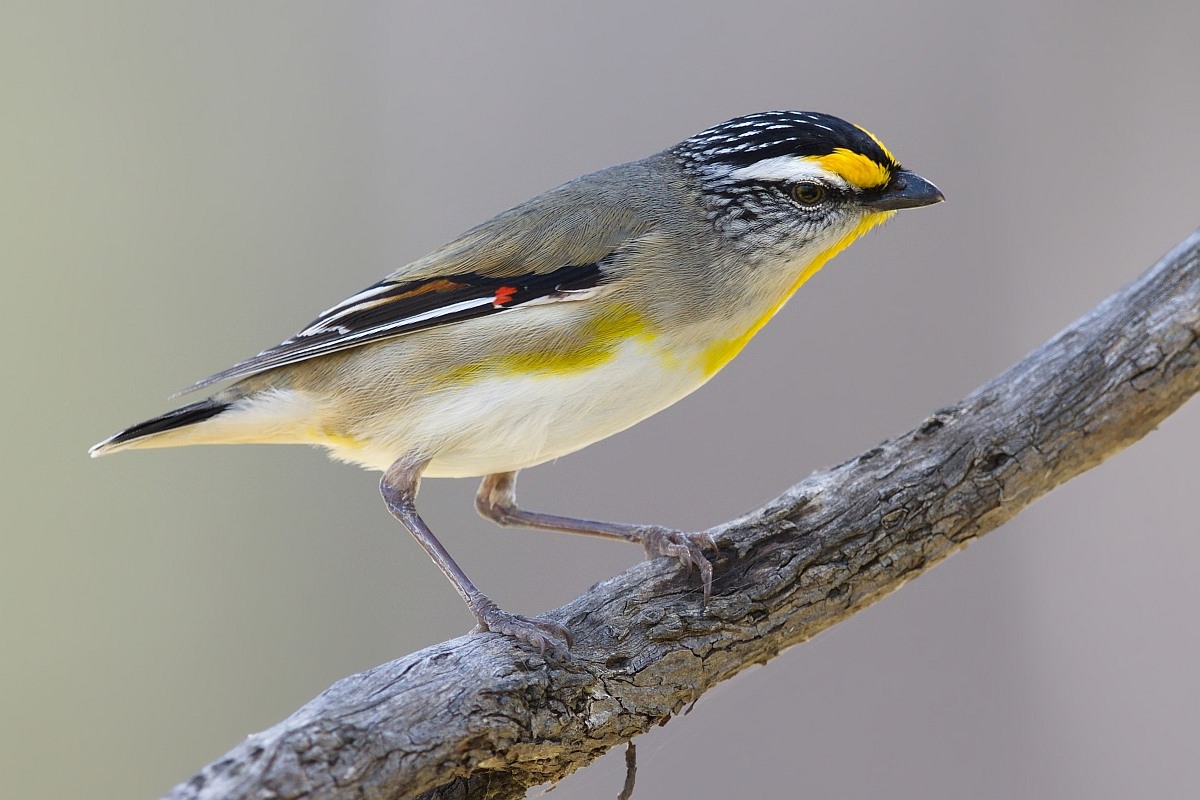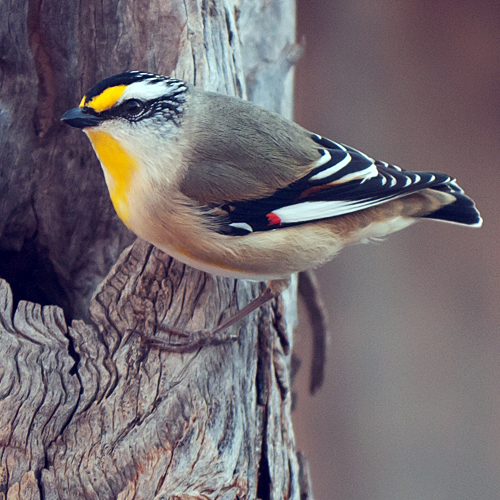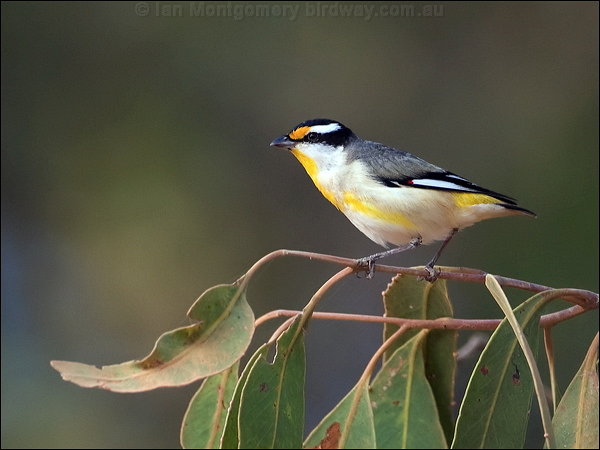
Pardalotus striatus
TAXONOMY
Pardalotus striatus Gmelin, 1789, Tasmania. Six subspecies.
OTHER COMMON NAMES
English: Black-headed pardalote; stripe-crowned pardalote;
red-tipped pardalote; yellow-tipped pardalote; French:
Pardalote а point jaune; German: Streifenpanthervogel; Spanish:
Pardalote Estriado.
PHYSICAL CHARACTERISTICS
3.5–4.5 in (9–11.5 cm); 0.42 oz (12 g). Sexes similar in plumage,
immatures with muted head color.
DISTRIBUTION
Australia except for desert sections of interior. P. s. uropygialis:
northern Australia; P. s. melvillensis: Melville and Bathurst Islands;
P. s. melanocephalus: coastal belt of Queensland; P. s. ornatus:
coastal New South Wales; P. s. striatus: Tasmania; P. s.
substriatus: Australia from New South Wales to Western Australia.
HABITAT
Widely distributed through eucalypt woodlands and forest, but
also in rainforest and mangroves.
BEHAVIOR
Form flocks during winter. The races striatus, substriatus, and
ornatus are nomadic or migratory; other races tend to be
sedentary. Loud and repetitive two- to three-note call.
FEEDING ECOLOGY AND DIET
Gleans foliage and twigs, primarily in eucalypts and acacias, for
a broad spectrum of invertebrates.
REPRODUCTIVE BIOLOGY
Nest is cup-shaped, partly or completely domed, of plant
fibers, at the end of an earthen burrow or in a tree hollow.
Both parents contribute to burrow excavation and nest construction.
Typical clutch is three to five white eggs, incubated
by both parents.
CONSERVATION STATUS
Not threatened; found in a broad spectrum of environments
and across a wide geographic range.
SIGNIFICANCE TO HUMANS
None known.
Photo Gallery of - Striated pardalote




 Animalia Life
Animalia Life